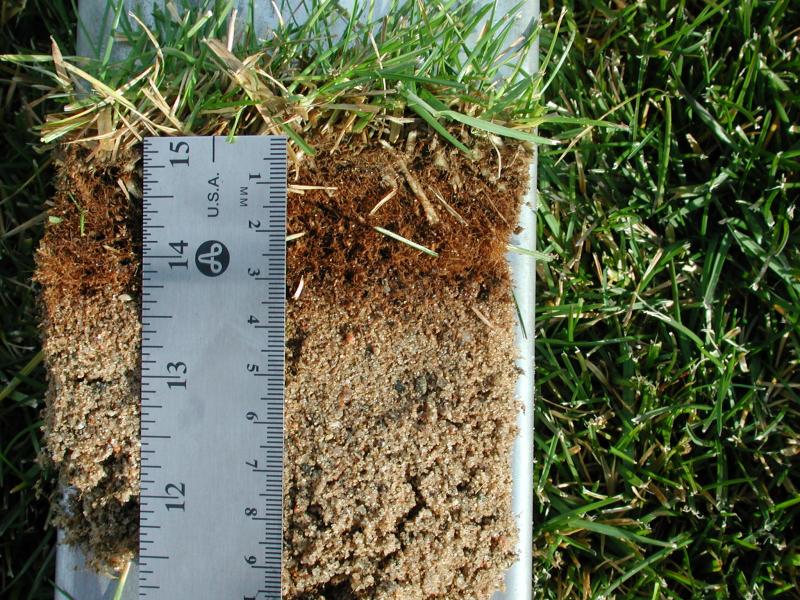|
What is thatch?
Comprised of leaves, stems and roots – some living, some dead – thatch forms as a natural part of your lawn's growing process. It lies on top of the soil, a tightly woven layer beneath the visible grass blades. What does thatch do? As long as it doesn’t get thicker than 1/2 to 3/4 of an inch, thatch contributes to lawn health. Thatch serves to protect the crown of the grass plant, and it helps to prevent soil compaction. However, if let to grow too thick, thatch can, in turn, hurt your lawn. Thick thatch can become so dense that it keeps rain and nutrients from reaching the roots of your lawn. Does your lawn have a thatch issue? Here are 3 ways to find out:
How do you get rid of thatch? There are a few methods for removing thatch from your lawn with the most popular option being dethatching - using a special tool to rip out the thatch up through your grass. Another common approach to dealing with thatch is aerating your lawn - a method in which "air holes" are poked through the grass and thatch to allow water and nutrients to reach the roots and prevent soil compaction. If your lawn has mild thatch, a plug aerator may be effective. The aerator dethatches the lawn in each spot where plugs are removed while avoiding the creation of bare spots that a dethatcher causes. How do you prevent thatch build up? The best method for preventing thatch build up with your lawn is by having a regular maintenance program, including regular aeration. Thatch builds up the most during the heavy growth season, typically spring and summer, and is ready to be removed in the late fall. Also, once you have removed the thatch, it is important to prep your lawn for the spring by reseeding bare areas, applying fertilizer and giving your lawn lots of water. Where to get help If this all seems like too much to take on, Graham Landscape & Design provides regular maintenance services to both residential and commercial properties. Contact us today to discuss the maintenance schedule that would be right for you and your home or business.
0 Comments
Your comment will be posted after it is approved.
Leave a Reply. |
OUR BLOG
Check here to see what we've been up to! Categories
All
|
|
|
Copyright © Graham Landscape Maintenance & Design LLC in Eugene Oregon. All rights reserved.
LCB # 8920 541-729-8029 34024 Old Willamette Hwy S., Eugene, OR 97405
Offering Landscape Design and Maintenance in Albany, Coburg, Corvallis, Cottage Grove, Eugene, Junction City, Roseburg, Springfield, Veneta and Surrounding Areas
LCB # 8920 541-729-8029 34024 Old Willamette Hwy S., Eugene, OR 97405
Offering Landscape Design and Maintenance in Albany, Coburg, Corvallis, Cottage Grove, Eugene, Junction City, Roseburg, Springfield, Veneta and Surrounding Areas

 RSS Feed
RSS Feed
